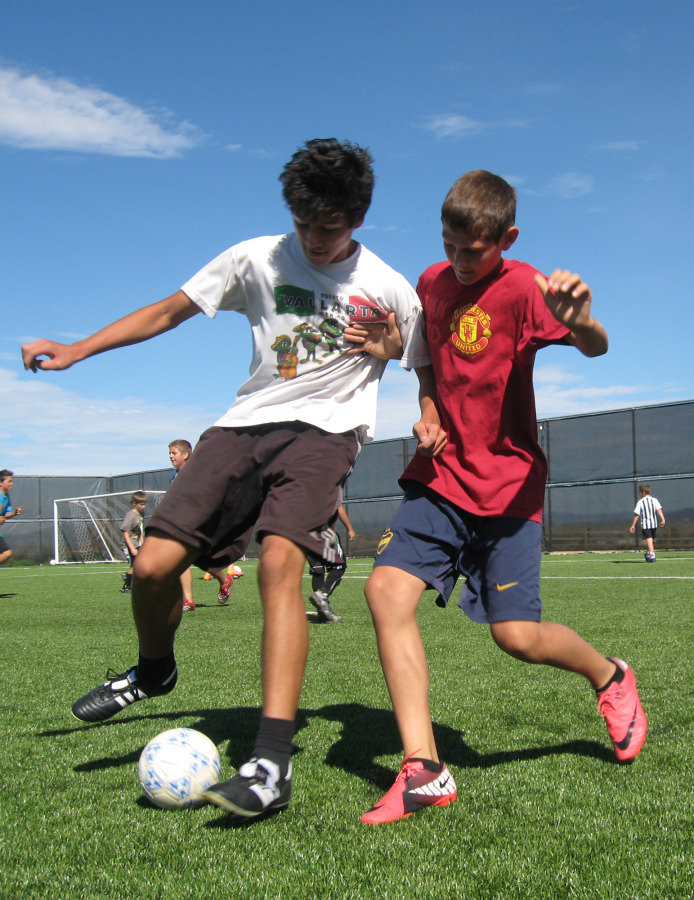Reviving the Pickup Game
By Sam Snow, written for Soccer America's Youth Soccer Insider eNewsletter
Whether you call it street soccer, a sandlot game, a kick-about or a pickup game -- this is the way that millions upon millions over many decades have learned to play soccer.
While the pickup game has not disappeared in the USA, it is not used in soccer as it could be. There are millions of kids playing soccer in our country, so why do we not see pickup games at every turn?
There can be many reasons why so few pickup games happen in youth soccer. They include a sedentary lifestyle, the vacant lot doesn't exist any longer, even the design of neighborhoods nowadays means there is little or no yard on which to play, parents are reluctant to let their kids play away from home without adult supervision, soccer facilities are closed except for scheduled events, or the kids simply don't know how to organize a game.
There can be more reasons and some of the ones I've noted are beyond the direct control of most soccer coaches. But the one that is the most disturbing to me is that kids don't know how to organize their own games. How has it come to pass that kids can't throw down something to mark goals, pick teams and play?
Well part of the answer is that we coaches have taken the game away from the youngsters. We over-coach and we over-organize. Coaches, parents and administrators need to take a step back and give the game back to the players.
In the 1970s and the 1980s, coaches had to be a focal point of most soccer experiences since so many of the kids were just then being introduced to the game. Unlike today, there were very few televised soccer matches, and in many communities none at all.
Professional and college team were not nearly as prevalent as today, so a chance for a kid to go watch adults play the game was few and far between.
Even to watch a World Cup match you had to go to a theater for closed-circuit TV to see a game. Consequently the coach had to demonstrate all of the ball skills, show players how to position themselves on the field and teach the rules.
While that's still true to an extent today, the models of how to play the game for a child to see are many. The coach no longer needs to be at the center of a novice's soccer experience. Now keep in mind that coaches are not alone in the need to give the game back to the players.
Our organization has been a double-edged sword for American soccer. The ability to organize has created teams, clubs and leagues. It has created from nothing soccer complexes that dot the land and in some cases are of quite high quality.
The organization has provided for coaching and referee education that is very good. The game has grown tremendously over the last 35 years on the backs of volunteers for the most part.
But the organization has a down side too. We adults meddle too much in the kids' soccer world. We plan everything! From uniforms for U6 players to select teams at U10, the adults are too involved. The kids don't know how to organize a pickup game because we have never let them.
OK, so good organization is an American trait. But what might be driving the compulsion to infiltrate adult organization into child's play?
As a sports nation we suffer from the "too much too soon" syndrome. Many adults involved in youth soccer want so badly to achieve success (superficially measured by the won/loss record and number of trophies collected) that they are bound to treat children as miniature adults. Unfortunately it is the adults who lack the patience to let the game grow within the child at its own pace.
In the National Youth License coaching course of the National Coaching Schools the idea of street soccer is presented. This is a way for the club to begin to give the game back to its rightful owners, the players.
The club provides the fields and supervision for safety (but no coaching) to let the kids show up and play pick up games. Granted it's not as spontaneous as a neighborhood game, but it does provide a chance to play without referees, without coaches and without spectators.
This means the kids are free to learn how to organize themselves, solve disputes, become leaders, rule their own game, experiment with new skills, make new friends and play without the burden of results.
If the club wants to provide an even better fun-filled learning environment, then put out different types of balls to use in some of the games, encourage the kids to set up fields of different sizes, allow mixed age groups to play together and even co-ed games.
The kids have a lot they can learn from each other. After all, players learning from players has produced Michele Akers, Pele, Johan Cruyff and many other world-class players. That same unencumbered environment has produced the multitudes who support the game.
When we adults give the game back to the players, in some small measure we are most likely to keep more players in the game for all of their lives and then the odds improve for the USA to produce its share of world class players.
Youth soccer now lives in the culture it created over the last 30 years. Will we evolve?





